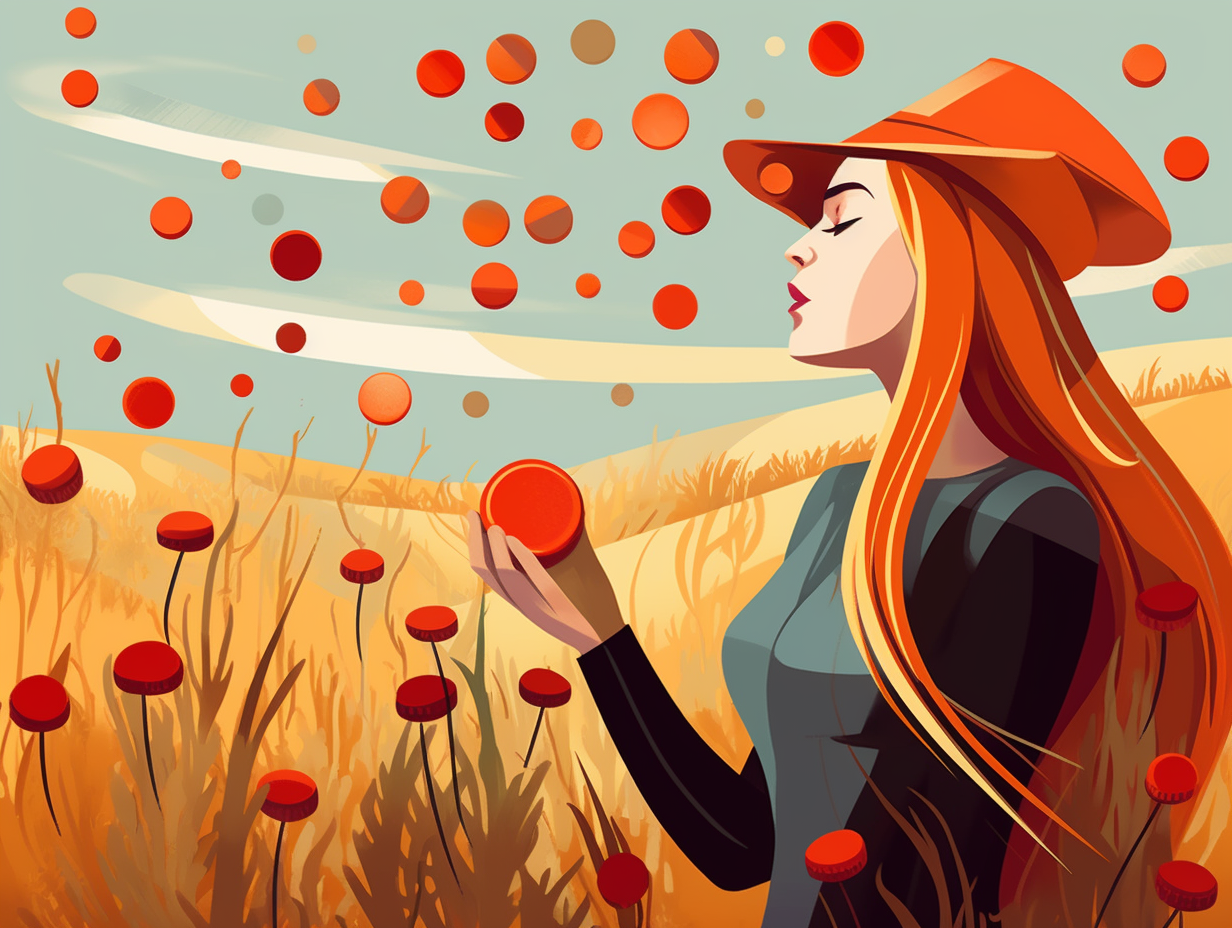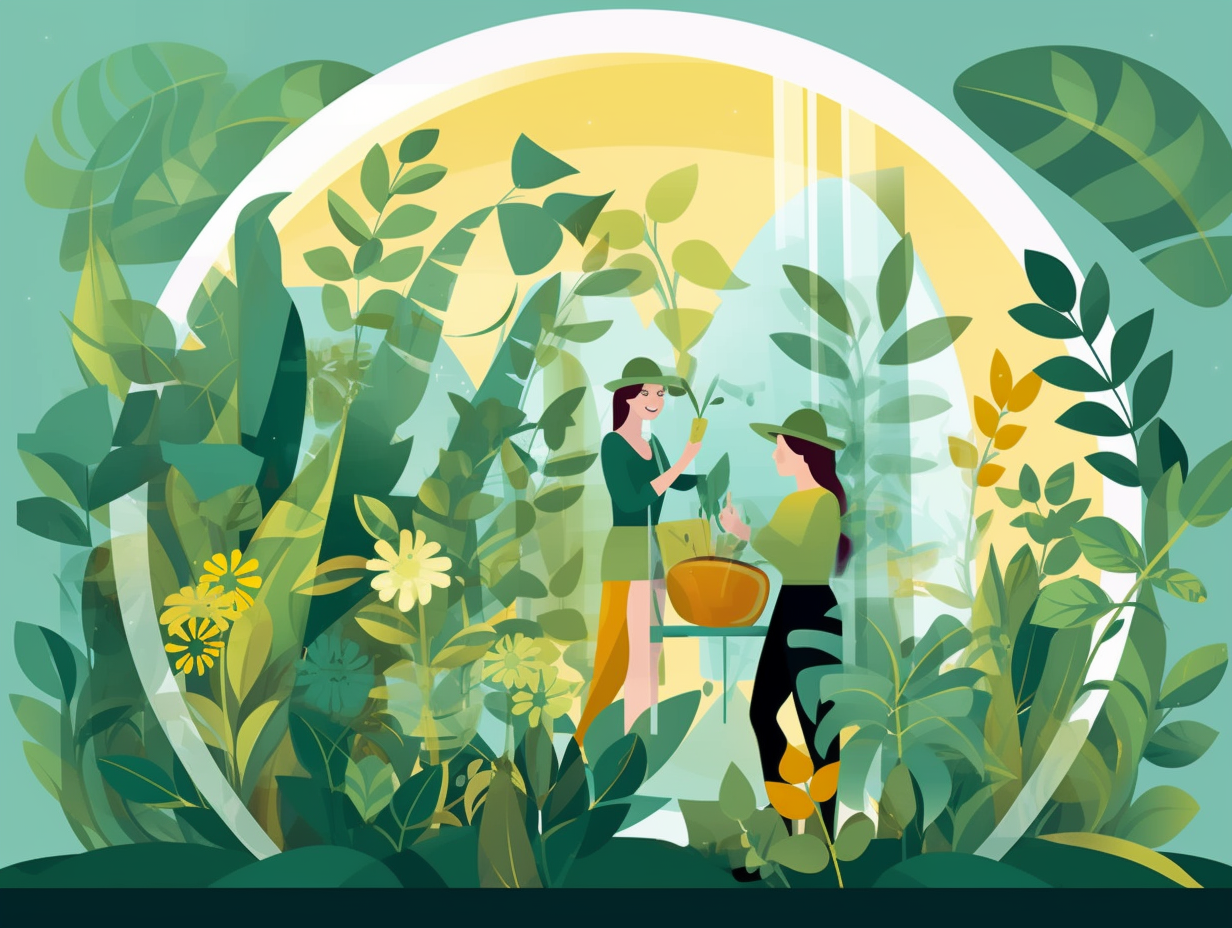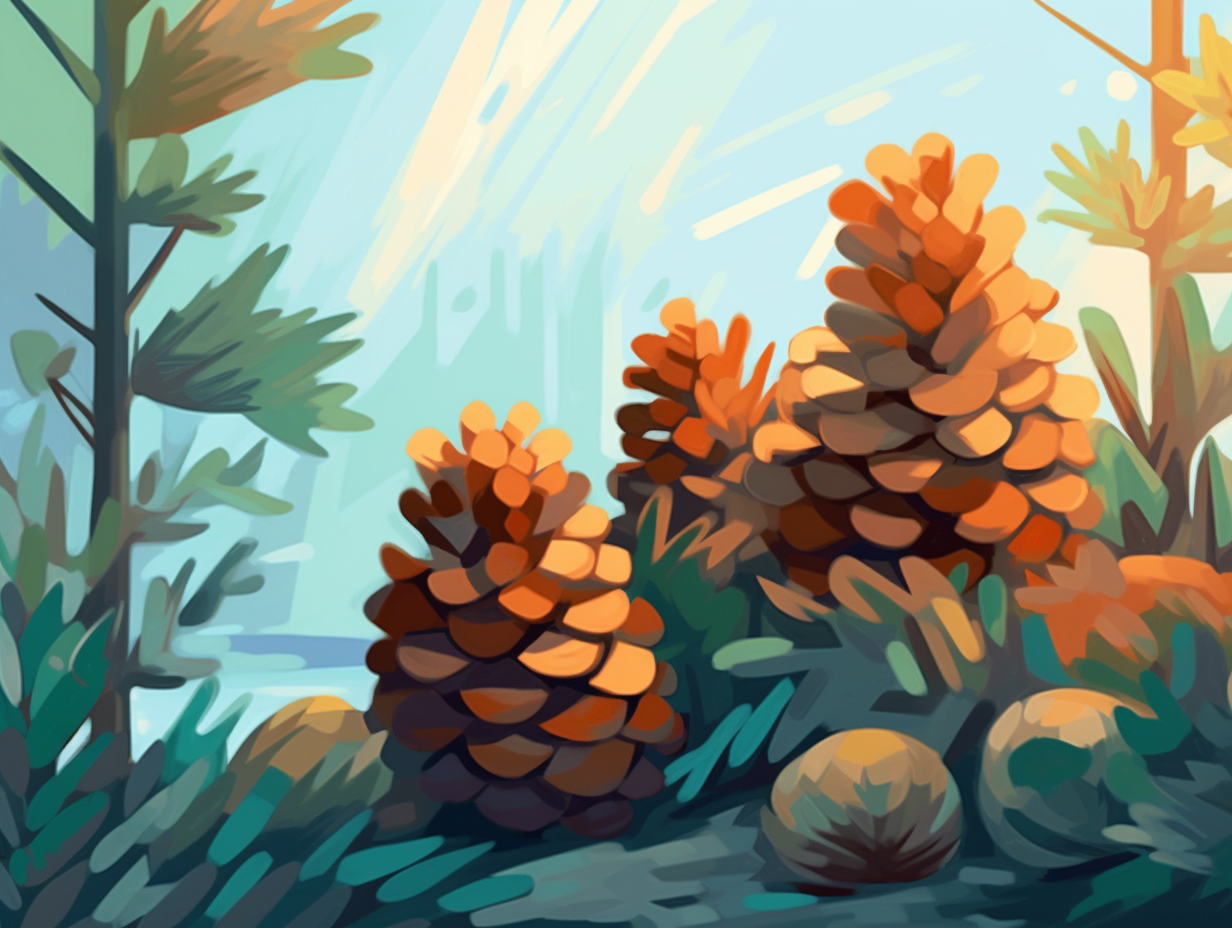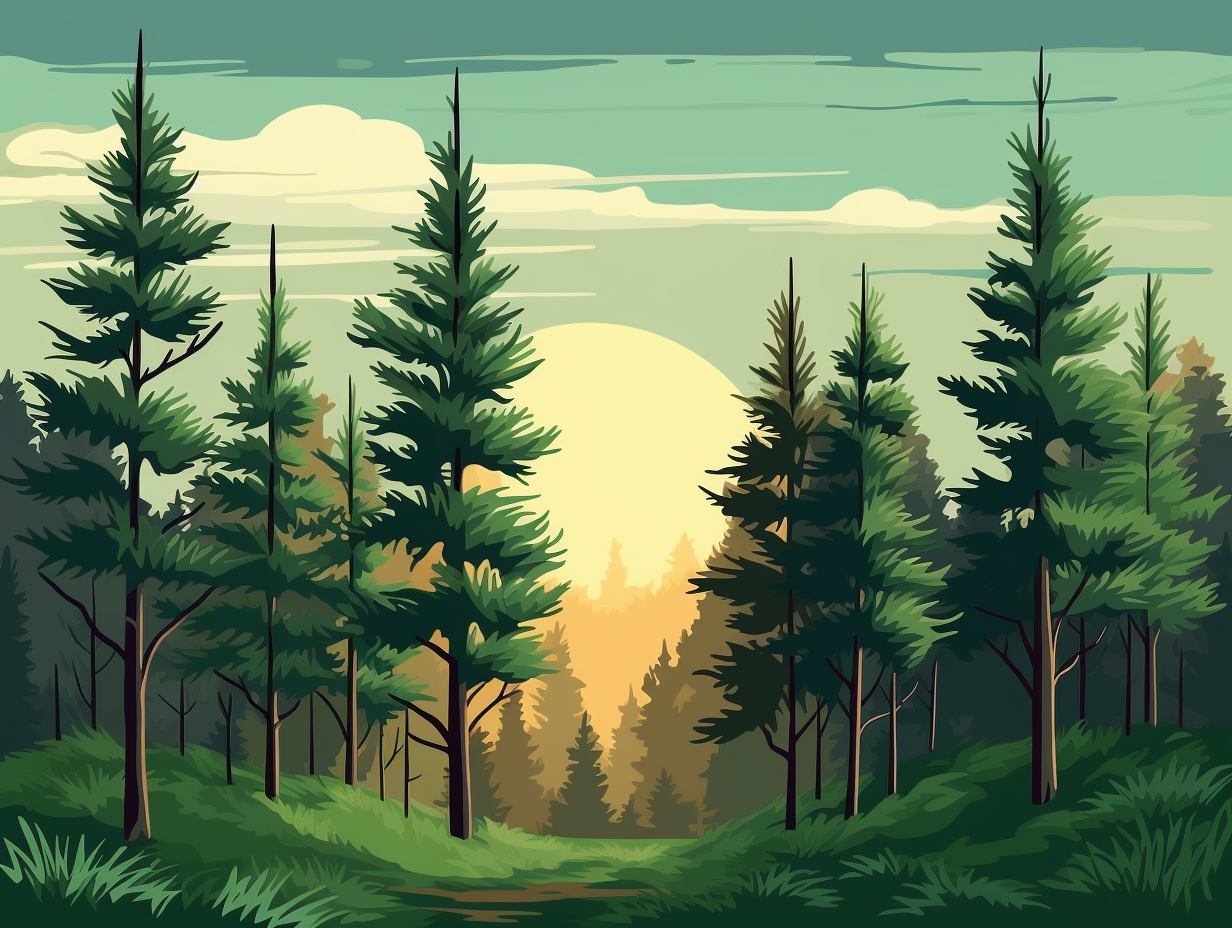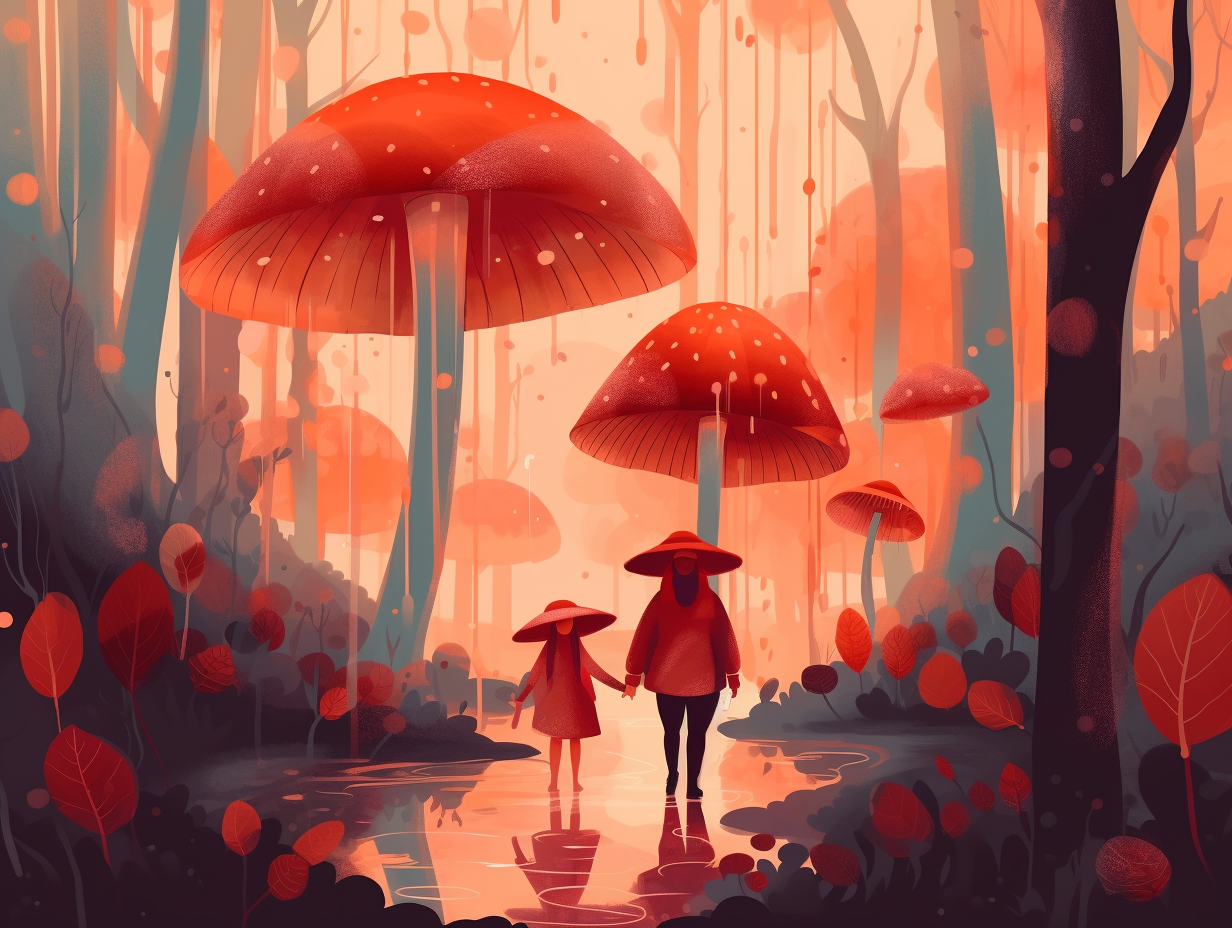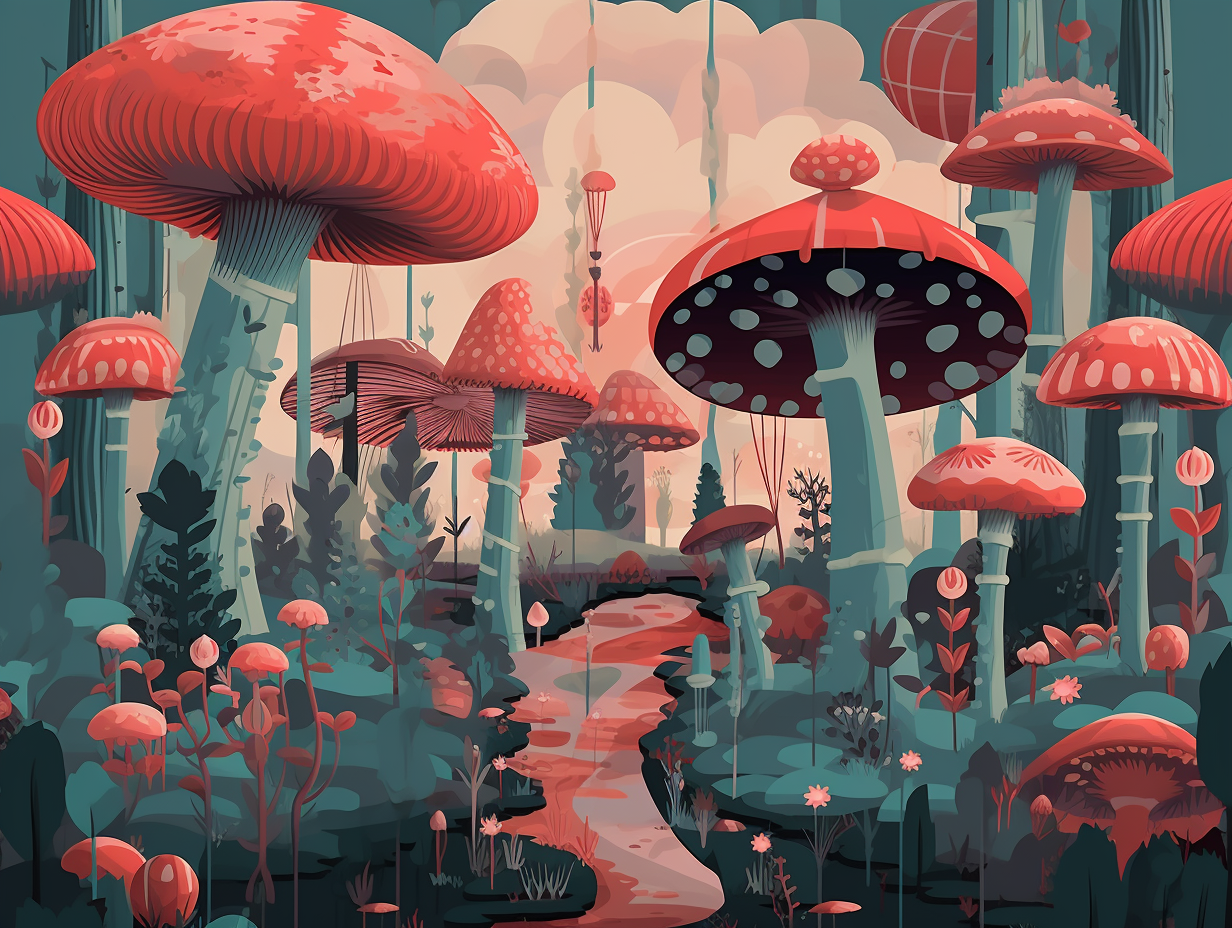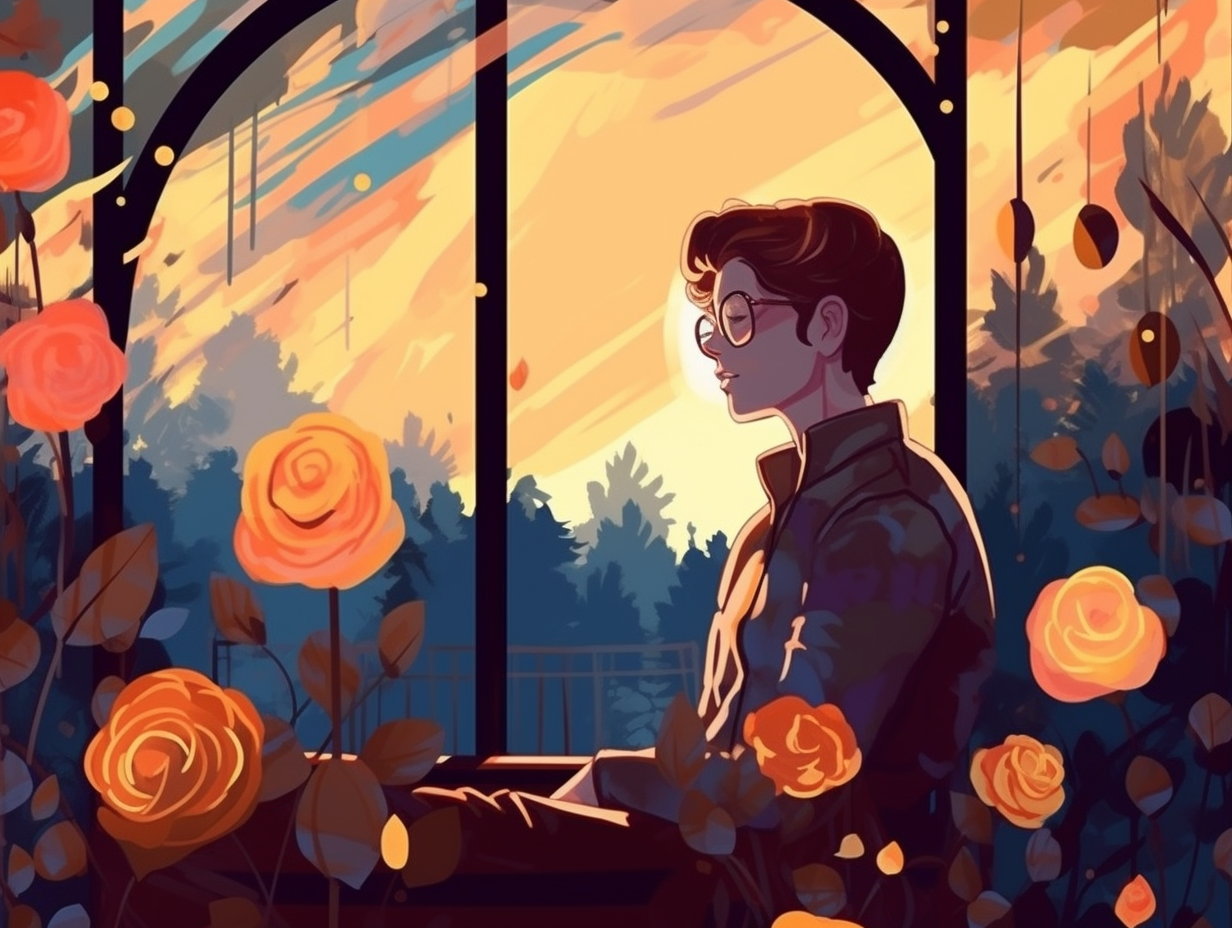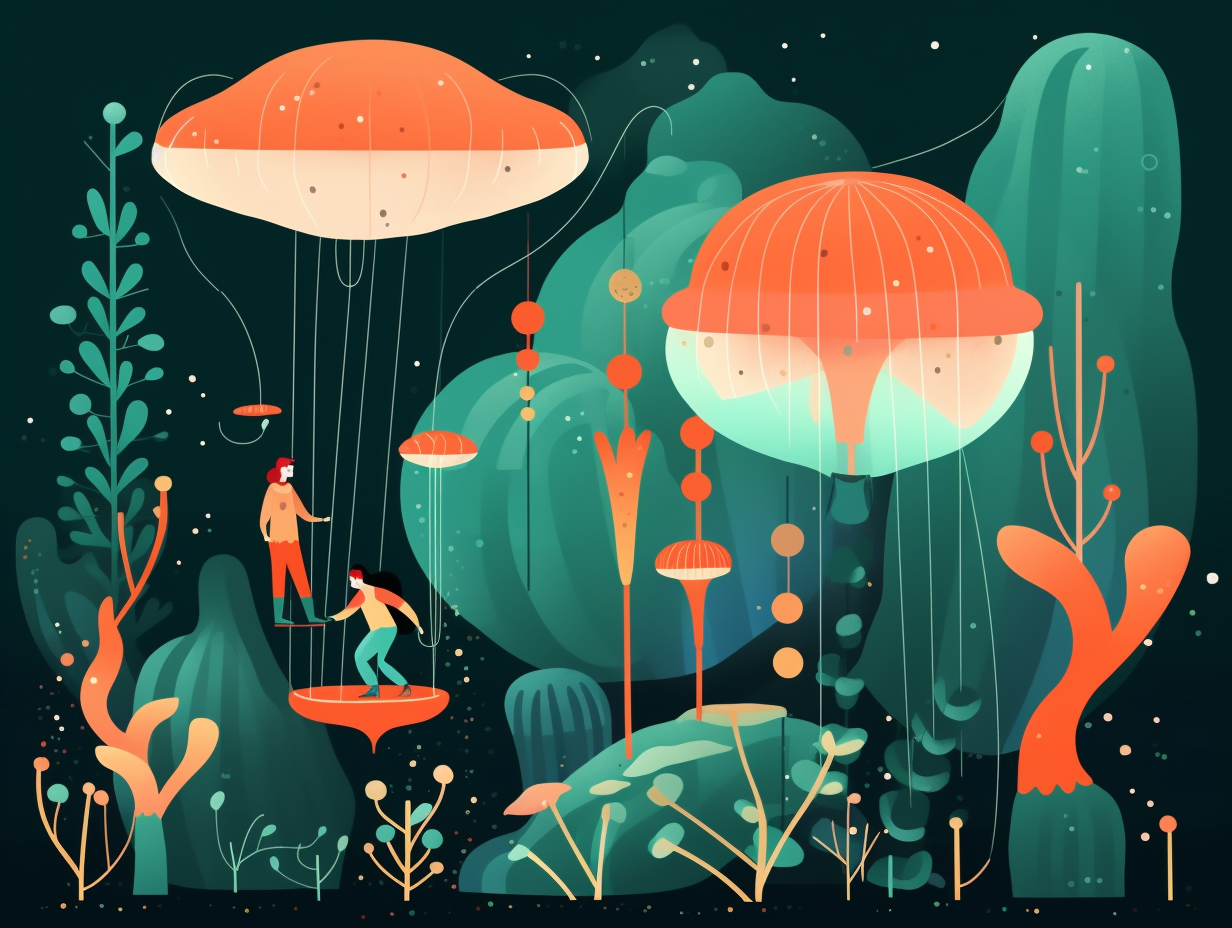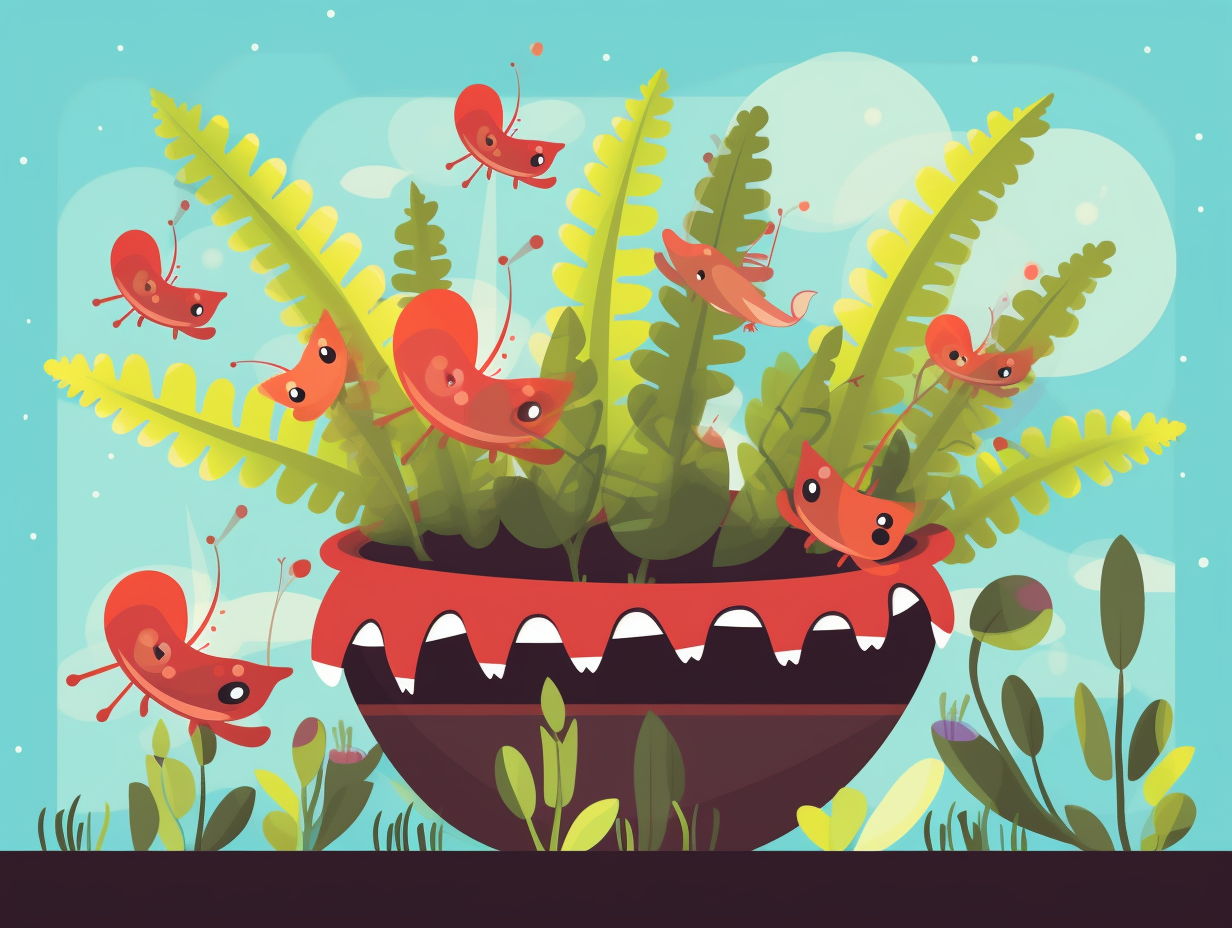Discover the Wonders of Green: Top 27 Fun and Fascinating Facts About Plants

1. Plants' Chemical Gossip
Whoever said plants can't talk clearly hasn't eavesdropped on their chemical gossip: Plants emit volatile organic compounds (VOCs) as a form of communication, sending scented signals to warn their leafy neighbors of dangers like disease, injury, or hungry herbivores, and even inviting natural predators to join the party.
Source => ncbi.nlm.nih.gov
2. Mood Ring Plants
Who needs mood rings when you've got mood plants? Mother Nature's built-in color-changing fashion accessories are all the rage in the botanical world: The Poinsettia plant's leaves turn red in response to shorter days and longer nights, while some types of Hydrangea flowers update their wardrobe based on the pH level of the soil they grow in — all thanks to the pigments present in these plants and their sensitivity to various environmental factors.
Source => nhpbs.org
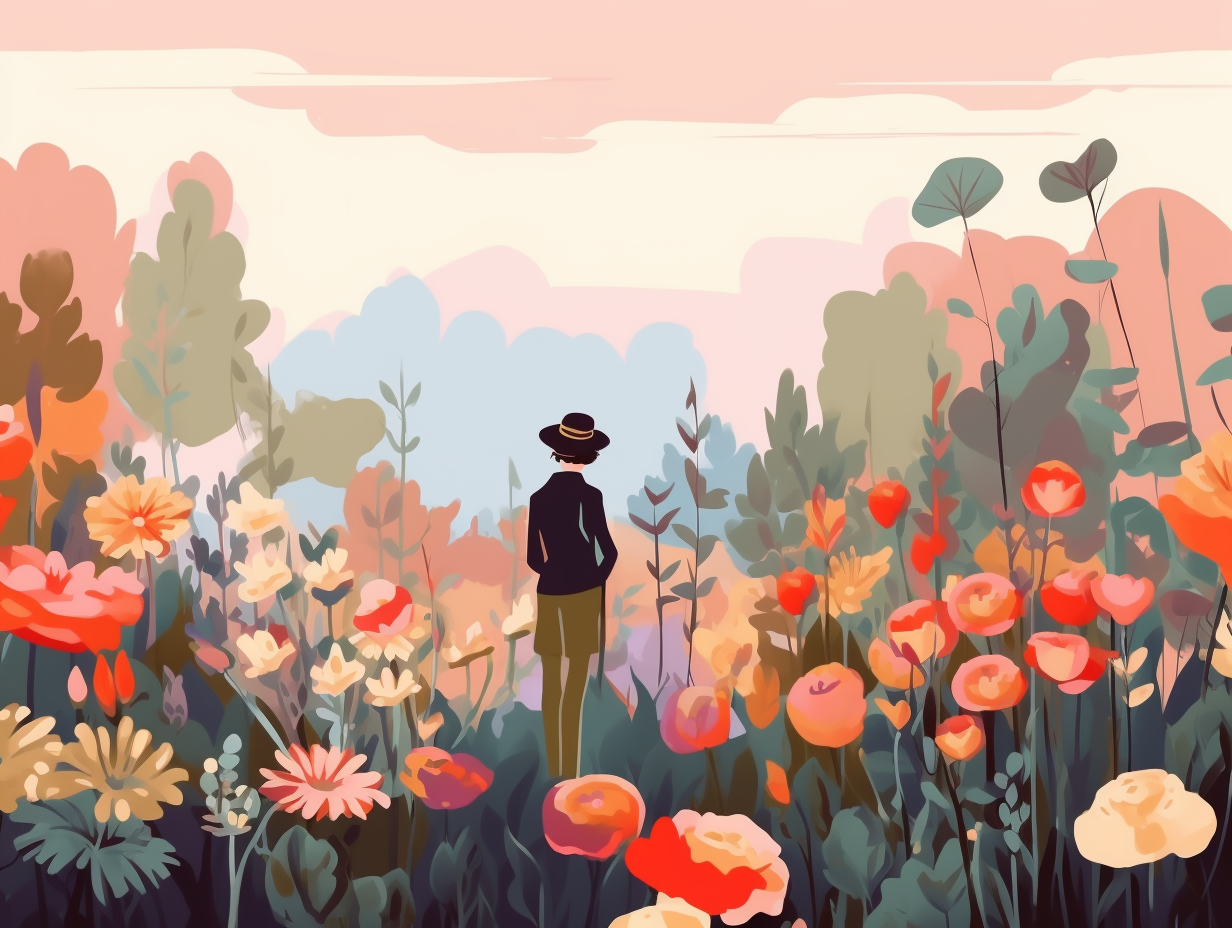
Discover the jungle's gigantic, smelly superstar: the titan arum, or corpse flower, boasting a staggering 6 to 8 feet in height, a bloom diameter close to 3 feet, and gigantic leaves! 🌺💀🌿
=> Fun Facts about Flowers
3. Sunlight-Transforming Plants
Get ready to leaf your worries behind and chloro-fill your life with knowledge: plants impressively harness the power of sunlight using a pigment called chlorophyll, transforming it into chemical energy stored in glucose molecules essential for their growth and survival.
Source => nationalgeographic.org
4. Hyperion: World's Tallest Tree
Jack and the Beanstalk, eat your heart out: Meet Hyperion, the world's tallest known living tree, standing a jaw-dropping 115.92 meters (380.3 feet) tall in Redwood National Park, California. Discovered in 2006 by naturalists Chris Atkins and Michael Taylor, this arboreal skyscraper is estimated to be 700 to 800 years old and holds an impressive 530 cubic meters (18,600 cubic feet) of wood within its colossal trunk. However, due to overzealous tree-huggers ruining Hyperion's neighborhood, Redwood Park decided to ground the party in July 2022, keeping its address a closely guarded secret.
Source => en.wikipedia.org

5. Acorn Foraging Fun
Move over, squirrels! Humans are acorn-craving too: Acorns, packed with carbs, proteins, and fats, are vital to seedling survival during winter. Harvest them in early autumn to grow new oak trees, supporting your local wildlife and indulging your inner forager simultaneously.
Source => shakerlakes.org
6. Poison Ivy's Itchy Secret
Don't beleaf everything you see: Poison ivy cleverly disguises itself as harmless plants like aromatic sumac, Virginia creeper, and boxelder, but its three leaflets at the end of a long stem, thick hairy vines, and tiny pumpkin-like berries give its itchy secret away!
Source => hgtv.com
7. Potato Chip Dreams Dashed
Alas, your dreams of cultivating a potato chip farm have been fried: potatoes are modified stems called tubers that grow underground, and the crispy snack we know as potato chips are made by slicing these tubers and drowning them in hot oil.
Source => vedantu.com
8. Cherry Fruit-ception
Forget keeping up with the Kardashians, try keeping up with the cherries! You see, cherries have been playing a stunning role of fruit-ception, bamboozling our taste buds all along: They're not true berries at all, but are actually classified as stone fruits due to their hard pit centers; these little fibbers are made up of drupelets, which are tiny fruits that band together to form a larger fruit à la the raspberry!
Source => hellofresh.com
9. Wild Roses: Pretty in Pink
Pink-achu, I choose you: Surprise, surprise! Wild Roses, often called "species roses," almost always bloom in oh-so-fabulous pink, while the elusive red or white varieties keep playing hide-and-seek. Topped by the unicorn of roses, the rarest of them all is the golden yellow one – all thanks to these floral divas lacking the cross-breeding history and hybridization you'd find in their modern counterparts!
Source => jacksonandperkins.com

10. Pollinator Protection Priority
When bees and butterflies walk into the bar of Mother Nature, they don't open a tab - instead, they collect pollen on tap: Plants rely on an entourage of creatures such as bees, beetles, butterflies, moths, and even bats, rodents, and birds, which have co-evolved with them to perform the essential task of pollination, affecting billions of dollars in crop yields and making the protection of these pollinators a serious economic and ecological priority.
Source => ecology.fnal.gov
11. Plant Gossip 2.0
Who knew plants were the OG social network, with way less drama than Twitter: They communicate through volatile organic compounds (VOCs), warning their leafy colleagues about danger and preparing defenses, because there're no keyboard warriors in the plant kingdom.
Source => ncbi.nlm.nih.gov
12. Cool Plants' Secret
Plants might not be able to walk and talk, but they sure know how to stay cool under pressure: With stomatal function that has been conserved throughout their evolution, plants exhibit taxon-specific patterns of cell wall components in their guard cells, resulting in varying cellulose crystallinity and biomechanical functions depending on the plant group and their environment!
Source => ncbi.nlm.nih.gov
13. Asexual Plant Reproduction
Whoever said "a piece of you will always live on" must've had a green thumb: some plant species can grow entirely new plants just from a single leaf or stem cutting, thanks to a process called vegetative propagation, which allows them to bypass romance and reproduce asexually, creating genetically identical offspring!
Source => extension.umaine.edu
14. Socially Distanced Savannas
Ever imagined a world where trees practice social distancing and sunlight RSVPs its attendance? Welcome to the savanna life: These quirky ecosystems cover roughly 20% of Earth's land area, boasting a hilariously spaced-out tree population that allows light to party on down with the luscious grasses below. You can catch these sun-soaked shindigs in hotspots like Africa, Australia, Thailand, South America, and India.
Source => en.wikipedia.org

15. Hummingbird Wingmen
In the world of matchmaking, hummingbirds are the ultimate wingmen, ensuring flowers find their perfect pollen partner: They inadvertently transfer pollen while sipping nectar, with certain bird and flower species even evolving together to create the perfect nectar-loving beaks and irresistible nectar-producing flowers.
Source => askabiologist.asu.edu
16. Carotenoids: Sun Protection
Ever wondered why plants never get sunburned? It's not because they've stolen your SPF 50 or have a sneaky umbrella hidden among the foliage! No, they've got their own nature-approved sun protection: carotenoids, yellow, orange and red pigments that not only aid in photosynthesis but also act as a shield by dissipating excess sunlight as heat, protecting plants from the harmful effects of too much sunshine.
Source => toppr.com
17. Creepy Carnivorous Plants
When plants get hangry and decide to go meatless no more: there are over 600 types of carnivorous plants that have evolved to munch on insects and other small creatures, not out of wickedness but as a survival tactic due to nutrient-starved soils. Dating back around 70 million years, these captivating plants use cunning strategies like folding, barbed lobes, and deep, narrow cups that lure and trap their targets, or sweet, sticky nectar on their leaves and stems to ensnare their prey. Who knew plants could be a strange blend of creepy and innovative survivors!
Source => housedigest.com
18. Speedy Bamboo Growth
You might think the Flash was quick, but have you met Bamboo? It gives ol' Barry Allen a run for his money and could teach him a thing or two about speed: Bamboo holds the title as the world's fastest-growing plant, with certain species capable of shooting up an astounding 91 centimeters (around 35 inches) in just a single day under optimal conditions.
Source => reelpaper.com
19. Venus Flytrap's Dinner Party
When the Venus flytrap throws a dinner party, it's shocking how fast the guest list shrinks: The flytrap has a talent for accumulating electrical charges, and once it reaches a certain level, it can snap its trap shut within a fraction of a second – no need for hair-trigger invitations. This clever combo of electrical and biochemical engineering makes for a seriously speedy and efficient insect snack.
Source => academic.oup.com
20. Corpse Flower Aroma
If you're fascinated by the scent of expired gym socks and dinners left in the sun, you'll love the aroma of the corpse flower: This botanical sensation grows up to 10 feet tall, attracts pollinators with its rotting meat smell, and blooms only every two to 10 years, releasing eye-catching strings of pollen from its male flowers while ingeniously mimicking both a flower and a putrid carcass in its quest for survival.
Source => pbs.org
21. Orchids Seeking Higher Ground
When orchids aren't busy making vanilla and seducing unsuspecting insects with their sultry flower shapes, they hightail it to higher ground seeking sun and sustenance: These crafty spectacles of nature have evolved to grow on tree trunks, rocks, and other surfaces to outsmart plant rivals and absorb the necessary nutrients from tropical understories, even making a home on trees in South Florida with the right talent and tricks.
Source => fairchildgarden.org
22. Dandelion Divas
Who knew dandelions were such divas? Sporting different wardrobe choices depending on their audience: invasive Taraxacum officinale (dandelion) plants from northern regions rock thick seed coats, while their southern counterparts prefer to keep theirs on the thinner side. This haute couture of seed coats is not just for show, but actually influences their germination rates, with the southern variety sprouting in greater numbers. And as it turns out, these prima donnas also appreciate a good watering, as their germination rates shoot up with increased hydration.
Source => ncbi.nlm.nih.gov
23. Plants' Nightly Rest
While plants may not be part of the Sleepyheads Club or snore to the tunes of Mother Nature: they do experience a nightly period of rest where they slow down growth and metabolic activities, yet still partake in the respiration dance of inhaling oxygen and exhaling carbon dioxide.
Source => kidsgardening.org
24. Plant Warning System
Talk about a whispering network! Plants have their own hush-hush hotline for keeping each other in the loop: Through chemical signaling, they release volatile organic compounds (VOCs) to warn fellow green life of any impending dangers, such as insect invasions, drought, or microbial attacks. This enables neighboring plants to boost their toxic compounds to fend off threats, or even call upon predators to handle the unwanted guests.
Source => britannica.com
25. Phytoliths: Plant Sherlocks
Next time you're looking for a "blast from the past," remember that plants have their own ancient history detectives – phytoliths, the "plant sherlocks": These tiny silica structures found in and between plant cells help researchers reconstruct ancient flora and environmental changes by acting as fossil records, with their distinctive shapes shedding light on past vegetation and climates, all while making paleobotanic and archaeological research a bit more "elementary," my dear Watson.
Source => ncbi.nlm.nih.gov
26. Deceptive Pseudoflowers
Feeding off nectar? As if that's too mainstream for some plants! Some botanical eccentrics have offbeat tastes and prefer a side of deception with a whiff of eau de rotting carcass: For example, pseudoflowers emit odors resembling decomposing animal flesh, fooling unsuspecting carrion-feeding insects, such as flies, into pollinating them while offering no nectar or pollen in return.
Source => jstor.org
27. Plant Musical Preferences
Ever been to a plant concert where flowers windmill their petals to the thunderous beats of botanical bangers and roses shred the air guitar while gently swaying to violin solos? Well, you're not far off: studies have shown that plants might actually have musical preferences, with classical or jazz music promoting growth, while heavy metal could stress them out and cause damage. Roses, in particular, seem to strike a chord with violin tunes – no thorns about it!
Source => pistilsnursery.com
Related Fun Facts



